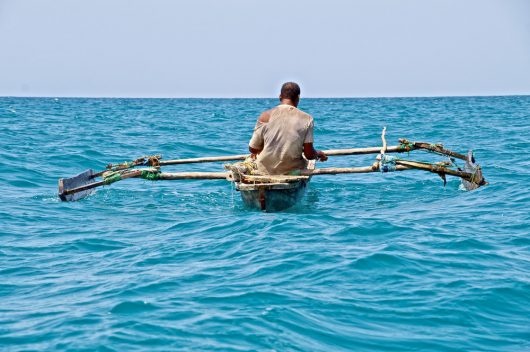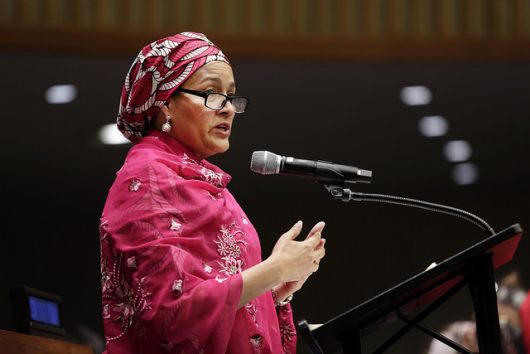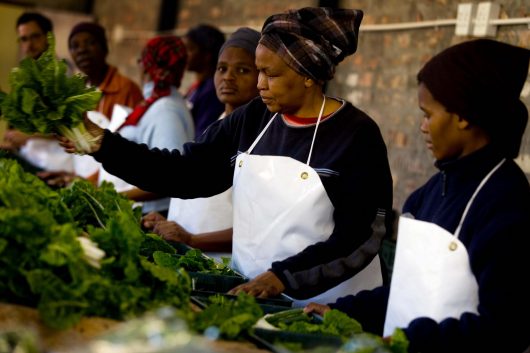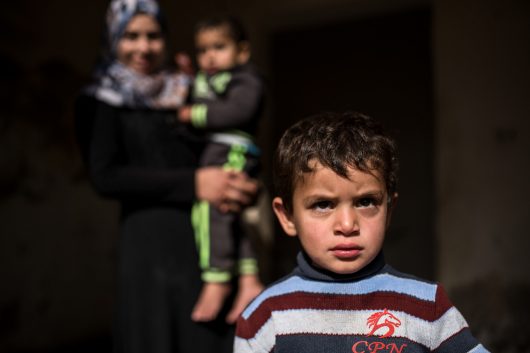
In March 2017, the United Nations (U.N.) warned that some 20 million people in South Sudan, Somalia, Nigeria and Yemen face starvation and famine if the international community did not act quickly. This warning refocused attention on the ongoing food insecurity faced throughout the African continent. While the issue is completely preventable, starvation in Africa still exists.
Facts about Starvation in Africa:
-
- According to the Food and Agricultural Organization of the U.N., some 153 million people (about 26 percent of the adult population) suffered from severe food insecurity in 2014/15 in sub-Saharan Africa.
- Food insecurity exists when people do not have adequate access to sufficient, safe and nutritious food which meets their needs for an active and healthy life. The issue is thus not the existence of enough food, but the access to food.
- There are various interrelated reasons why African states are vulnerable to food insecurity. Several countries in the region remain highly dependent on food imports to ensure adequate food supplies. Thus exposing them to unstable food markets and commodity prices. The African region also has the lowest per capita income in the world and the highest poverty levels. This means that large parts of the region’s populations are unable to cope with rising food prices.
- The majority of Africans are also directly dependent on subsistence farming on a continent that is prone to extreme natural disasters, including severe drought and floods. These natural disasters lead to failed crops, as well as insufficient pasture feed and water for livestock. The current El Nino drought has been one of the most intense and widespread in the past 100 years.
- The majority of African countries facing acute food insecurities are also experiencing internal conflict. This impedes both access to food and food production. The levels of political instability and corruption result in these states being unable to address food crises, whether caused by rising food prices or natural disasters.
- Food insecurity in South Sudan has reached extreme levels. Several parts of the country declared pockets of famine, and nearly 100,000 people face starvation. Limited humanitarian assistance has reached these regions because of recurrent fighting due to civil war.
- A famine can only be declared when certain measures of mortality, malnutrition and hunger are met. Namely, at least 20 percent of households in an area face extreme food shortages with a limited ability to cope, acute malnutrition exceeds 30 percent, and the death rate exceeds two per 10,000 people per day. The last famine in Africa was in Somalia in 2011, which killed an estimated 260,000 people.
- Apart from the three countries highlighted by the U.N., several other African countries are facing acute levels of food insecurity. The World Food Programme classified emergency situations in the Lake Chad Basin (Cameroon, Chad, Niger, including Nigeria) and Southern Africa (Lesotho, Madagascar, Malawi, Mozambique, Swaziland, Zambia and Zimbabwe).
- The Lake Chad Basin faces an acute humanitarian crisis caused by existing challenges of extreme poverty, underdevelopment and climate change. Boko Haram violence only aggravates these challenges. Some 7.1 million people need food assistance, and famine looms in the areas most affected by the crisis in northeast Nigeria. Malnutrition in the region is rising at alarming rates, and more than half a million children are suffering from severe acute malnutrition.
- While the situation in southern Africa has stabilized somewhat in recent months, food insecurity remains widespread following two years of consecutive drought. Some 16 million people in the countries worst-hit by drought will need emergency humanitarian assistance throughout early 2017.
The current levels of food insecurity and starvation in Africa are bleak. Humanitarian assistance is sorely needed to address the food crises in the hardest hit areas. While this would help to address the crisis in the short-term, more attention should also be given to long-term peace-building and food security efforts on the continent to prevent the recurrence of famine.
– Helena Kamper
Photo: Flickr






 The
The  Earlier this month, the United Nations and other NGO partners
Earlier this month, the United Nations and other NGO partners  In recent days, the United Nations has sought greater aid for Afghanistan’s most vulnerable population.
In recent days, the United Nations has sought greater aid for Afghanistan’s most vulnerable population.